Porkline Ohio










































































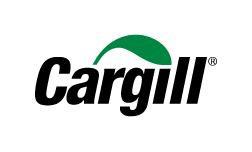
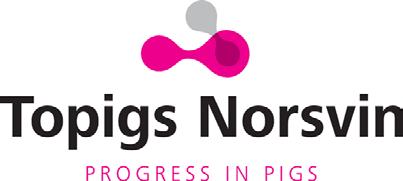









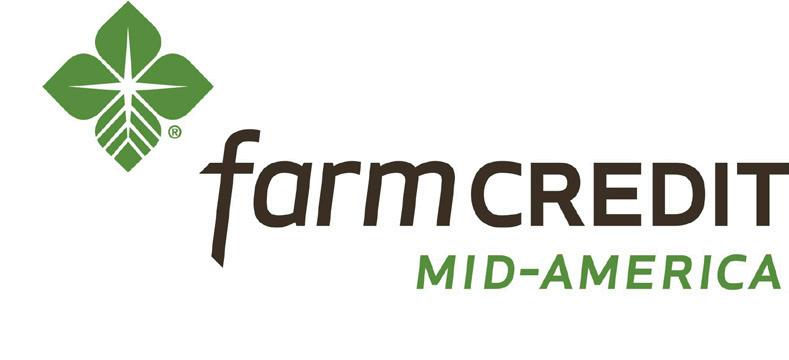
The Ohio Pork Council would like to thank the following sponsors for their support of 2023 programming and events.








If you ask anyone what the definition of sustainability is, you will get a wide variety of answers. In simple terms, sustainability is the ability to maintain at certain level or rate. As a pig farmer, you can wrap your head around investing in technology, management practices, and resources for a sustainable farming future.
As a vital part of the We Care principles, you and your team commit to be the ultimate environment caretakers. You can make good on this promise because you understand that being good stewards of the soil, water, and air is essential to continue to produce food for generations to come.
Still, policymakers, corporate investors, and consumers drive today’s meaning of sustainability to a whole new level – and it is about to impact your farm.
Environmental, social, and governance (ESG) considerations continue to transform today’s business landscape. While ESG scorecards originated in the European Union, U.S. businesses, including your food production partners, are adopting corporate sustainability metrics to be accountable to their customers and beyond.
Often driven by a company’s stakeholders, corporate America’s ESG commitment is more than a passive, check-the-box requirement, however. It’s actively demanding that suppliers take measurable actions on a host of sustainability commitments, priorities, and requirements.
The ESG readiness survey, released by Deloitte in December 2022, indicated nearly three-in-five executives surveyed have already implemented a cross-functional ESG working group tasked with driving strategic attention to ESG. The progress in establishing a cross-functional working group has nearly tripled to 57% since the group was last surveyed in March 2022.
While the recent surge to integrate ESG within a business strategy is driven by the U.S. Securities and Exchange Commission (SEC) disclosure requirements proposed, investors’ and customers’ expectations are influencing the shift from sustainable commitment written on paper to measurable metrics visible for the world to see.
In March 2022, the SEC introduced plans to enhance and standardize climate-related disclosures for investors, as part of a growing awareness of the importance of ESG issues among public companies.
3-IN-5

57% PROGRESS IN ESTABLISHING CROSS-FUNCTIONAL WORKING GROUP
The devil is in the details. The 490-page SEC proposal requires listed companies to not only disclose risks that are “reasonably likely to have a material impact on their business, results of operations, or financial condition,” but also “to disclose information about its direct greenhouse gas (GHG) emissions (Scope 1) and indirect emissions from purchased electricity or other forms of energy (Scope 2),” as well as certain types of GHG emissions “from upstream and downstream activities in its value chain (Scope 3).”
What happens on the farm now becomes the center of the value-chain activities for your food production partner. Can you provide your production partners ESG metrics, outlined by Harvard Law School (refer to blue box), in order to sell pigs?
Although the SEC requirements could possibly be a large threat to your freedom to farm, consumers care about sustainability. The consumer who is most likely to try plant-based products is more aware and makes protein selection based on societal and cultural values.
The recent “Power of Meat” study by the North American Meat Institute revealed that 85% of meat shoppers consider at least one “better for me attributes” — better for me/my family, better for animals, better for the planet, better for farmers/workers — when buying meat.
We know pork checks all the boxes for sustainability — nutrient dense, affordable, planet-friendly, and cultural and societal value. Yet, without real, on-farm sustainability metrics for pork, the aware consumer may opt out of meat eating if he or she does not feel good about the protein source.
While many factors may drive pig farmers to measure their farms’ sustainability footprint, I invite you to pause and reflect why you should have sustainability benchmarks. As U.S. House Ag Committee Chairperson G.T. Thompson told the Farm Forum hosted by Congressman Warren Davidson (OH-8) in Ohio, “There is no bigger climate defender than the farmer.”
The good news is America’s pig farmers can quantify key sustainability metrics on the farm for free. Already funded by your Pork Checkoff dollars, sign up for the no-cost Pork Cares Farm Impact Reports to assist you in tracking, measuring, monitoring, and reporting the sustainability story of your farm today.

As explained by Harvard Law School, environmental, social, and governance (ESG) breaks down into three categories:
• Environmental: energy efficiencies, carbon footprints, greenhouse gas emissions, deforestation, biodiversity, climate change and pollution mitigation, waste management, and water usage.
• Social: labor standards, wages and benefits, workplace and board diversity, racial justice, pay equity, human rights, talent management, community relations, privacy and data protection, health and safety, supply-chain management, and other human capital and social justice issues.
• Governance: corporate board composition and structure, strategic sustainability oversight and compliance, executive compensation, political contributions and lobbying, bribery and corruption.













Earlier this year, the Ohio Pork Council (OPC) welcomed Mike King as its new Senior Director of Communications and Public Relations. The veteran communications professional has worked in multiple roles in ag publishing and marketing communications agencies where he focused on communicating about agriculture products and services with an emphasis on swine. Most notably, King recently completed more than 13 years as science communications director at the National Pork Board in Des Moines, Iowa.
“We’re very pleased that Mike has joined the Ohio Pork team to help take our communications and marketing efforts to the next level,” said Cheryl Day, OPC Executive Vice President. “His extensive knowledge of the pork industry, along with his ability to make complex issues and topics relevant, understandable and useful, will serve Ohio’s pork industry stakeholders well.”
During his tenure at the National Pork Board, King focused on delivering Checkoff-funded research information to producers as well as keeping them informed on key issues such as biosecurity, antibiotic stewardship, environmental footprint and foreign animal disease. He oversaw the Environmental Stewards Awards and the subsequent America’s Pig Farmer of the Year programs, and he served as editor of the Pork Checkoff’s Research Review and Foreign Animal Disease Bulletin newsletters.
King, who grew up on a diversified grain and livestock farm near Jeffersonville, Indiana, holds a degree in agricultural communications from Purdue University.
Bayleigh Miller is from Plain City, Ohio, where she was a member of 4-H and FFA programs. Growing up Miller showed dairy feeders and market hogs at her county fair. It was these experiences that furthered her passion for the agriculture industry. Miller is a junior at The Ohio State University studying agricultural communications and animal science. During her time in college, she has been a member of Sigma Alpha Professional Agricultural Sorority, Saddle and Sirloin, and Agribusiness Club.

Kevin Stuckey, along with his family, maintained a small sow herd throughout his high school and college career. His interest in raising pigs led him to attend the Ohio State University to study ag business and a minor in animal science.
Shortly after his college graduation Kevin took a role with Cooper Farms in their first sow unit. Kevin has been employed with Cooper Farms since 1998 and has worked as a sow unit manager, sow production manager, and a sow division manager. He resides in Sherwood, Ohio with his family.

One of the biggest challenges the industry is facing is the rising cost of feed and feed ingredients, which can account for up to 70% of total production expenses. With Alltech’s Enzyme Management program, you can reduce your feed cost, maximize feed efficiency and improve herd performance, saving producers like you money while providing sustainable benefits for the animal and the planet.

April 22/23 Wood
May 13/14
Highland
June 3/4 Clark
April 29/30 Perry
May 20/21
Darke
June 10/11 Ashland
May 6/7 Marion
May 27/28
Pickaway
June 24/25 Auglaize

Ansley is from Farmersville, Ohio, where she was an active member in both her 4-H club and FFA chapter. Kozarec grew up showing pigs all 11 years in 4-H and has been an OH-Pigs member since it’s beginning, in 2015. Her experience in the show ring ranges from the OH-Pigs Circuit, the Montgomery County Fair, The Ohio State Fair and multiple national shows as well.

Kozarec is currently a sophomore at The Ohio State University, where she is majoring in Animal Science with a minor in Agricultural Communications. Kozarec is a member of the Sigma Alpha Sorority where she is serving as the Public Relations Chair, the Saddle and Sirloin Livestock Club where she is currently the Recruitment Chair and is also a Peer Mentor for the College of Food, Agriculture and Environmental Science.
In her role as the OH-Pigs Program intern, Kozarec will be responsible for efficient and effective communication with the Program Manager. She will work closely with the Program Manager to ensure that the OH-Pigs program has a successful line-up of shows. She will attend all the shows and work behind the scenes to ensure every weekend runs smoothly.
EXTRA FUNDRAISING OPPORTUNITIES:
Double-or-Nothing hole: Take a chance & bet on yourself to land on the green! All proceeds go directly to the Tony Forshey Memorial Scholarship fund. Mulligans: Buy the chance (chances) of a perfect shot.

50/50 Tickets: Get up to an arm’s length!



BRING CASH & HAVE FUN!
Registration Deadline: June 2, 2023
9:00 AM Shotgun Start | 4-Person Scramble
Windy Knoll Golf Club, Springfield, OH
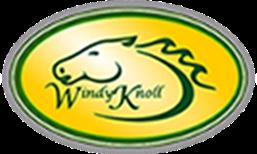
Entry: $450/foursome or $125/individual golfer
(Includes: green fees, cart, pork chop lunch, refreshments, and prizes.) Find more information at ohiopork.org or contact Saydee at pork@ohiopork.org.
Proceeds go to various collegiate scholarships and support Friends of Pork, the Ohio Pork Council’s PAC fund.

The 2023 edition of the Ohio Pork Congress was better than ever as more than 500 producers and pork industry representatives attended the twoday event held in Lima, Ohio, on Feb. 7-8.


“With nearly 70 exhibitors and 14 educational sessions to choose from, attendees at this year’s pork congress truly had a one-stop shop to see what’s new firsthand for improving production and learning about important issues affecting Ohio’s pork industry,” said Nick Seger, Ohio Pork Council president. “It’s always such a great gathering point to reconnect and get energized for a successful year ahead.”
In addition to the many swine industry experts who spoke at this year’s congress, participants got to hear from the state’s brand-new Director of Agriculture, Brian Baldridge (shown at right), who took office only days before the event. Coming from a background as a seventh-generation farm family, he emphasized his understanding of the issues facing Ohio’s pork producers and his commitment to help them thrive as a vital part of the state’s $1.24B food and agriculture economy.
“We’re very pleased with the turnout at this year’s Ohio Pork Congress and we appreciate all of the support provided by our sponsors and everyone who participates to make the congress our state’s must-attend event each winter,” said Cheryl Day, executive vice president of Ohio Pork Council. “Be sure to mark your calendars for next year’s congress on Feb. 6-7 in Lima.”
500 PRODUCERS & PORK INDUSTRY REPRESENTATIVES
70 EXHIBITORS
14 EDUCATIONAL SESSIONS
Those who made it to Lima got to hear from many top swine experts on a host of key pork industry issues relevant today. Here’s a quick look at a few of the presentations.
Presentation by Dr. Giovani Trevisan (top right) and Dr. Guilherme Cezar (bottom right), Iowa State University
Key take-aways:
• As many producers can attest, PRRS cases have continued a slow upward trend over the past three years. The reality today is that producers are often facing more than one strain at a time, which greatly complicates control and was worsen outcomes significantly.
• By staying vigilant against either getting PRRS at all or keeping an outbreak down to two or less strains at a time, producers can reduce piglet loss tremendously, which makes ongoing monitoring and testing critical. Make sure your veterinarian is always testing and aware of any strain that is not typical for your farm. Use of next-generation sequencing seems to promise better understanding of circulating strains and how to control them.
• The Ohio Animal Disease Diagnostic Laboratory (ADDL) is participating with four other laboratories across the country as part of the Swine Disease Reporting System to find practical solutions to PRRS and other swine diseases as they monitor emerging and endemic pathogens in real-time.

On a related note, the researchers urge producers to participate in the U.S. Swine Health Improvement Plan, which is designed to help respond to an outbreak of African swine fever or classical swine fever now, but could eventually evolve into a PRRS-monitoring and vaccination program. More information can be found at www.usswinehealthimprovementplan.


Key take-aways:
• Looking outside of the U.S. for on-farm labor is being driven by many factors such as retiring older domestic worker, a smaller domestic labor pool, and rising non-farm wages, which were all affected by the pandemic.
• Of all work visas, the TN visa is often the most successful for agriculture. It costs $160 and takes between one and three months to process, but can last one to three years with unlimited renewals. A major stipulation, however, is that the applicant hold a bachelor’s degree and be a professional from Mexico or Canada.
• H2-A visas can work for some farms, but holders must return to their country for three months each year. Also, the U.S. Department of Labor oversees this process, unlike those holding TN visas.
• For foreign workers, be very clear up front about housing, transportation, culture, dependents and time off to avoid issues later.
• Regardless of how you get your new employees, it’s critical to get them started off right to ensure that they will stay. Swineworks’ data showed that 60% of new hires leave within the first six months. However, that turnover figure drops to only 10% at the one-year mark and down to only 2% at two years.

Presentation by Dr. Dennis Summers, Ohio State Veterinarian
Key take-aways:
• Biosecurity must be viewed in both everyday or “peacetime” and outbreak or “wartime” footings. Most of the time, biosecurity should seek to prevent diseases from getting into a farm, but when a disease strikes, we must be ready to implement strict measures as we’ve seen with highpathogen avian influenza in our state’s poultry industry.


A highlight at this year’s OPC was the keynote speaker, Bryan Humphreys, CEO of the National Pork Producers Council (NPPC), who offered a multi-faceted presentation on top issues facing the U.S. pork industry. He covered various hot topics such as Prop 12, workforce needs, and foreign animal disease preparation.

• We must be ready to go to a “containment” mode when a disease such as African swine fever (ASF) were to reach the U.S. This is why your farm’s specific biosecurity plan must be implemented, which will severely restrict people and animal flow in/out of a site. This is why it’s critical to know where the zones are such as infected, control, buffer, etc.
• You must know the clinical signs of diseases such as ASF now to know what to look for and to contact your veterinarian and the state vet office as necessary.
• If depopulation is necessary, you must be prepared far in advance. Method, site space, equipment, biological containment (blood,etc.), labor, etc., must all be considered before it’s needed. Relying on a landfill site will likely be difficult, while composting requires a carbon source, which must be secured before the outbreak.
• To be better prepared for a foreign animal disease, producers are encouraged to use RABapp (access via Google), an online platform to help farm’s develop their Secure Pork Supply biosecurity plans.
Aside from his presentation, he enjoyed time talking with the Ohio producers, many of whom he’s known for many years. Accompanying Humphreys from NPPC was Josh Scramlin. He serves as the organization’s regional director for Ohio and is always ready to field questions about NPPC’s Strategic Investment Program (SIP).






There’s a reason why so many people are talking about the need for biosecurity and foreign animal disease (FAD) today—because the stakes for Ohio’s and the nation’s pork producers are so high. With the real threat of FAD such as African swine fever (ASF) as close as the Caribbean countries of the Dominican Republic and Haiti, the time to act is now.
“Because pork products can move anywhere around the world in 24 hours today, we must stay vigilant for foreign animal disease such as African swine fever,” says Dr. Dennis Summers, Ohio state veterinarian. “We recently experienced with high pathogen avian influenza can do here and across the country, so we don’t want that scenario in the pork industry.”
“It comes down to business continuity,” Summers says. “If we get an FAD and your farm is in the control zone, you won’t be able to move pigs without a permit. That’s why we urge producers to participate in the Secure Pork Supply plan, along with testing, so that they can demonstrate they are free of disease and are taking the steps necessary to mitigate risk of spreading the disease.”
Every pig farmer can make use of multiple tools available today to help create, refine or improve their risk-mitigation strategies for dealing with the possible introduction of foreign animal disease into the country. For a comprehensive checklist of preparation tips, see the following page or scan the QR code below.
Some key tools to consider and programs to participate in include the following no-cost ones sponsored by USDA and the Pork Checkoff, although other tools also exist.
Secure Pork Supply: This program gives producers a framework for a farm-specific biosecurity plan. To find out more and to enroll visit www.ohiopork.org/sps

AgView: This is an online tool that can provide disease status updates and pig movement data to state animal health officials. Learn more at agview.com

Swine Health Improvement Plan: Known as SHIP, this program aims to establish a platform for safeguarding, improving, and representing the health status of swine across participating farm sites, supply chains, states, and regions. Learn more, ask questions, or enroll in U.S. SHIP, contact Ohio Pork Council at pork@ohiopork.org or call (614) 882-5887.
While the U.S. Border and Protection agency keeps close watch on our national borders to potential incoming disease threats with the well-known Beagle Brigade and other tools, it only takes one instance for an FAD to enter. This reality makes onfarm preparation for an outbreak indispensable.
“While we hope ASF or another foreign animal disease don’t come to Ohio or anywhere in the U.S., we need to be prepared,” says Nick Seger, Ohio Pork Council president. “That means knowing what your biosecurity plan is and then following it closely to make sure it works.”


Summers says biocontainment of a disease pathogen is critical to limit the spread of a virus like ASF. However, this means that you must have a biosecurity plan for your farm and execute it well to achieve this goal.
SCAN TO DOWNLOAD CHECKLIST OR FIND PRINT COPY ON NEXT TWO PAGES
Global movement of pigs and people pose greater risks to herd health than ever before. This checklist helps pork producers prepare for an outbreak with practical steps and resources.

In the event of an FAD outbreak, Premises Identification Numbers (PINs) link site data and information for timely and efficient analysis by animal health officials for rapid decision making. Having these records in an electronic format, such as AgView, is preferered for effective industry response.
TRACEABILITY ONSITE
Obtain or maintain separate PIN for each production site, geolocating each to site where pigs are housed
Record origin/destination PINs for all animal and semen shipments, and include the sending PINs on bills of lading and diagnostic laboratory submissions. Also keep all animal, visitor, and equipment movement logs current for each site. Forms are available: animal, visitor, and vehicle and equipment
Create an AgView account and upload premises, pig movement, and Secure Pork Supply documentation
Working with your herd veterinarian and using available resources will assist with onsite preparedness.
Create and follow a site-specific biosecurity plan which can be shared upon request with responding agencies
Train all production staff/employees on FAD clinical signs, including:
• Foot-and-mouth disease - English or Spanish
• Classical swine fever - English or Spanish
• African swine fever - English or Spanish
Observe pigs daily for FAD clinical signs, document and report concerns
Perform diagnostic testing as directed by your herd veterinarian
Work with herd veterinarian to determine potential for Certified Swine Sample Collection participation
Develop depopulation/disposal plans in case of a market disruption and/or stop movement order:
• Reference USDA APHIS ASF Response Depopulation, Disposal, and Decontamination Guidance
• Consult state animal health officials and pork organizations for resources
• Plan to obtain movement permit for animal transport
• Identify feeding strategies to reduce pig growth
Enroll in US SHIP, a program designed for protecting, improving, and representing the health status of pig production operations across supply chains, areas, states, and regions.
In an FAD event, herd depopulation and disposal may be required to halt disease spread.
Develop a site-specific emergency depopulation and disposal plan with your herd veterinarian and appropriate state agencies
Determine required resources to conduct depopulation and disposal methods:
• Access swine depopulation checklist and swine disposal checklist. To best assure qualification for indemnity, depopulation should follow an American Veterinary Medical Association-approved method
Locate potential sources for equipment/supplies, consulting state animal health official and/or state pork association for resources
Develop on-site disposal plan or establish contract with disposal vendor, with back-up option
• See USDA APHIS ASF Response Depopulation, Disposal, and Decontamination Guidance
Identify mental health resources that may be needed in the event of an outbreak. Resources are available through AgriSafe Network, Rural Mental Health Hub, AASV Depopulation Debrief, many land grant university extension programs, and local mental health providers.
Document notes and questions to help advance your preparedness here:
© Copyright 2023 National Pork Board, Des Moines, Iowa USA. This message funded by America’s Pork Checkoff Program. Questions? Call the Pork Checkoff Service Center 1-800-456-7675 or visit porkcheckoff.org.
SCAN TO ACCESS THE FAD PREPARATION CHECKLIST WITH LINKS TO RESOURCES ONLINE.The Foreign Animal Disease Checklist is a collaborative project of Pork Checkoff, National Pork Producers Council, American Association of Swine Veterinarians, Swine Health Information Center, and US SHIP.

It may have gotten lost during the pandemic, but the U.S. Food and Drug Administration’s (FDA) announcement back in June 2021 regarding medically important antimicrobials is about to change how you get access to common over-the-counter (OTC) medications for your animals.
Known as Guidance for Industry #263, the FDA unveiled a fiveyear action plan for supporting antimicrobial stewardship that builds on the what the Center for Veterinary Medicine (CVM) has already done to support the judicious use of antimicrobials in animals. It’s driven by the concept that medically important antimicrobial drugs should only be used in animals when necessary for the treatment, control, or prevention of specific diseases.
Pork producers have practiced antimicrobial stewardship for years under the purview of the veterinary-client-patient (VCPR) relationship they maintain with their herd veterinarians. While prescription-only medications required direct veterinary purchase approval, OTC ones did not. Nonetheless, whole-herd health management has always been a joint, comprehensive effort and responsibility.

When GFI #263 takes effect on June 11, the importance of having a valid VCPR expands further as it will require a prescription for long-time medications. Those that will be affected by the new FDA rule include those that contain:
1 OXYTETRACYCLINE
2 3 4 5 6
PENICILLIN
SULFA-BASED ANTIBIOTICS (SULFADIMETHOXINE AND SULFAMETHAZINE)
For more information about how GFI #263 may affect your herd health management, contact your herd veterinarian. Also visit FDA’s FAQs for Farmers and Ranchers by scanning the QR code.


INGREDIENTS
8 oz. spanish chorizo (smoked, links with casings removed)
1 lb. ground pork
1/3 cup bread crumbs (dried)
1 large egg (beaten)
1 small yellow onion (minced)
1/3 cup green bell pepper (minced)
STEP 1
Finely chop chorizo in a food processor or with a large knife. Gently mix together ground pork, chopped chorizo, breadcrumbs, egg, onion, green pepper, garlic and salt. Shape into 6 patties about 3/4-inch thick .Refrigerate for 10 to 15 minutes.
STEP 2
Prepare a grill for direct cooking over medium-high heat, about 450 degrees F.
1 clove garlic (minced)
1/4 tsp. kosher salt
6 hamburger buns (split)
6 Tbsp. thousand island dressing
2 cups potatoes (shoestring, potato sticks)
6 lettuce leaves (green)
STEP 3
Grill burgers, with the lid closed, for 5 minutes. Turn and finish cooking for 4 to 5 minutes more, until cooked through or until the internal temperature reads 160 degrees F on a digital meat thermometer. Remove from grill.

STEP 4
Toast buns on the grill, about 1 minute per side. Build burgers on buns with 1 1/2 tablespoons dressing, 1/3 cup shoestring potatoes and one lettuce leaf. Serve immediately.
Every generation poses new challenges to established ways of communicating and doing business, but according to a new study by The Center for Food Integrity (CFI), America’s food system has a lot to do to win over this group. However, there are bright points in the data that point to some areas of commonality that could just be at the heart of how U.S. pig farmers and pork production can win over the increasingly important Gen Z – authenticity and shared values.
“The findings equip the food industry with insights to engage Gen Z consumers, Gen Z farmers and ranchers, and the Gen Z workforce,” said Roxi Beck, CFI Consumer Engagement Director, who led the Gen Z initiative. “The guide details engagement strategies agriculture organizations can use to attract and retain young members and future leaders. Additionally, it details how food companies, restaurants, retailers, agribusinesses and others involved in the business of food can attract and integrate this up-and-coming generation into today’s multigenerational workforce.”
The research culminated in a communications guide, “Engaging Gen Z: The Consumer, The Farmer/Rancher, The Workforce,” that details CFI research and other Gen Z findings, along with specific strategies to engage each audience.
“Gen Z consumers are looking to food not only for sustenance –they want it to positively impact long-term health for the body and the mind, but they also want it to be produced sustainably for the future of our planet,” said Beck. Importantly, they are proponents of technology and innovation as they have many examples of how life is improved through innovations. “Be forthcoming with the role of technology in food production and how it directly relates to consumer goals. They see innovation as critical to solving global challenges. Sharing examples of your efforts and progress demonstrates your commitment to sustainability.”
What might be surprising to some was the finding that unlike trends seen in previous generations, Gen Z is more accepting of technology used to produce food—if it aligns with their other values.
According to Beck, Gen Z values and champions technology, having been immersed in it since birth and seeing it as a path to solving some of the most pressing challenges in our world. That’s part of why they are open to learning about ag technology used to produce food that will provide the taste, quality, health and sustainability attributes that appeal to them.
Ultimately, whether consumers accept or reject technology in food comes down to trust, which must be earned. When communicating about technology in food, like gene editing, primary messages should include key drivers of trust, like food safety, sustainability, naturalness of the technology and making information readily available and easy to understand.
In the end, Beck points out that when it comes to food-related conversations with consumers, shared values are 3- to 5-times more important to earning trust than simply sharing facts. For America’s pig farmers, achieving this goal with Gen Z will likely depend on how well they share their stories about how they live out their values every day on the farm in areas such as food safety, animal care and environmental stewardship.
To view the Gen Z Engagement Guide, scan the QR code.
Born between the mid-to-late 1990s and the early 2010s, Gen Z accounts for 20.67% of U.S. consumers and nearly one-third of the global population. Gen Z’s economic power is the fastest growing across all generations and their income is predicted to increase fivefold to $33 trillion by 2030 and surpass Millennials’ incomes by 2031.
A Harris Poll found that 66% of Gen Z say social media is an essential part of their lives. YouTube leads the pack, according to Statista, at 79%, followed by TikTok and Instagram and 59%, Snapchat at 48%, Facebook at 43% and Twitter at 34%.

Gen Z also thinks very differently about the products they buy –including food and beverages. They are driven by social causes, including environmental and social justice issues.
66% SAY SOCIAL MEDIA IS AN ESSENTIAL PART OF THEIR LIVES
OF GEN Z

It doesn’t matter if you are a small, niche, or large commercial producer—or if you raise show pigs— one case of African swine fever (ASF) in the U.S. will stop all pig movements. Movement won’t resume until animal health officials do contact tracing and know where all pigs are and their disease status.
However, today’s producers also have more tools than ever to help protect the industry and their livelihoods. Thanks to lots of collaboration between the National Pork Board, USDA, Iowa State University and others, there are three things that all producers should act on today.

At its core, Secure Pork Supply is about business continuity through biosecurity, movement guidance and disease monitoring. You will need to work with your herd veterinarian to create a farm-specific plan that can be followed every day but is even more critical during an FAD event such as an ASF outbreak.
To learn more and how to get going on this critical tactic, visit ohiopork.org/sps.
AgView is a free, secure and easy to use opt-in technology solution from the National Pork Board that puts the power in your hands to provide pig movement data, in real-time, during peacetime to your state veterinarian. Seconds count when it comes to responding to ASF, so position yourself and the industry to share data when it is needed most.
Learn more by talking to your record-keeping provider and by visiting porkcheckoff.org/agview.
Certifying producer and packer compliance in the U.S. Swine Health Improvement Plan (U.S. SHIP) is not complicated. Sign up for U.S. SHIP and certify your pig movements through your AgView account.




“As a father of five young children and a full-time pork producer, getting away from the farm can be difficult. While there are many issues that directly affect my family’s independent swine operation, I can’t always be in Columbus or Washington, DC to talk with lawmakers and advocate for my farm. That’s why I support the National Pork Producer Council’s (NPPC) Strategic Investment Program (SIP).
By investing in SIP, I have hired an array of dedicated experts at both NPPC and the Ohio Pork Council (OPC) to promote the interests of my family’s multi-generational farm on my behalf. This allows me to focus on raising pigs, while NPPC and OPC focus on raising awareness of commonsense legislation and regulation that will help me and my family succeed for decades to come. I ask that you join me as an SIP investor today because our livelihoods depend on it.”
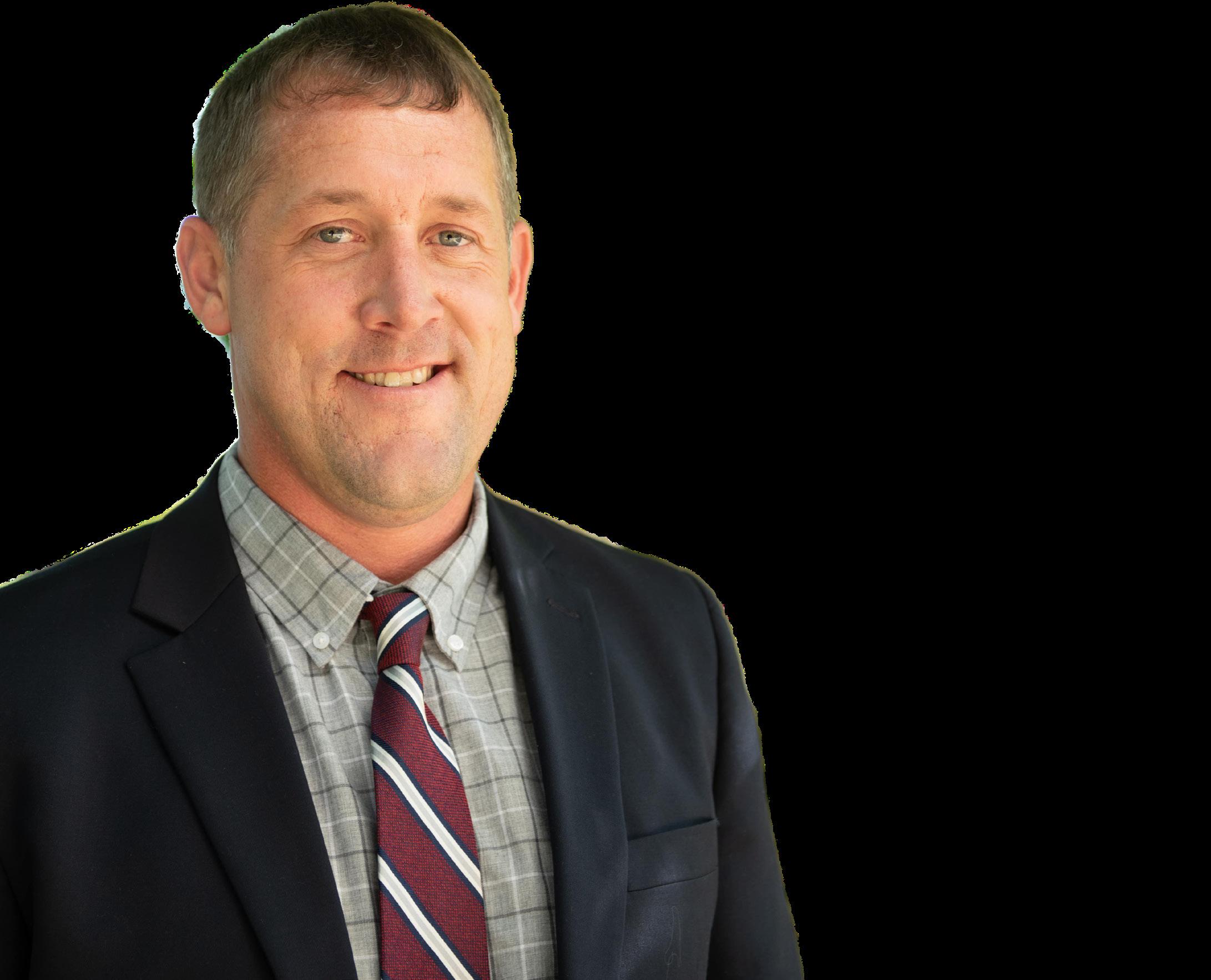

To be your voice, we need your voice.
Inc.